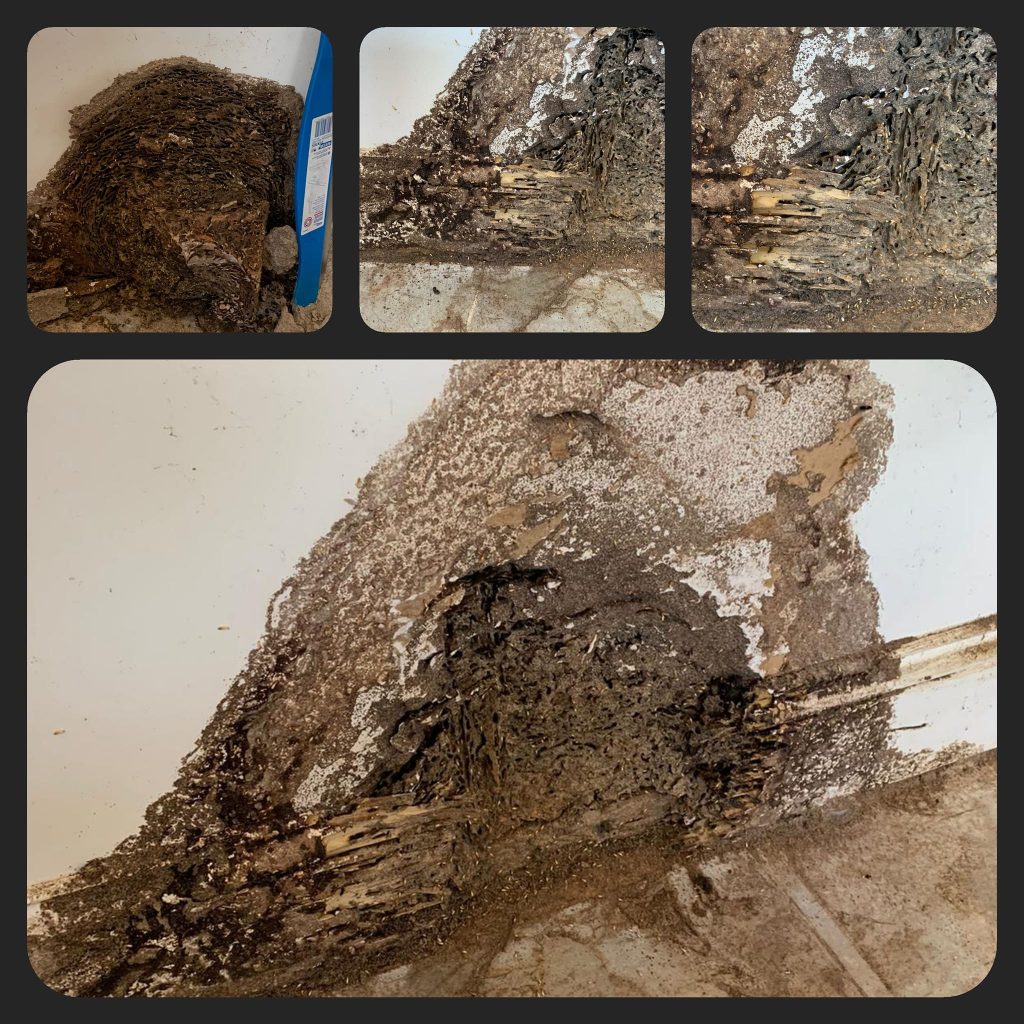Introduction
Welcome, fellow Floridians, to a topic that’s as much a part of our lives as sunshine and sand: termites. While these tiny critters may not be the most glamorous conversation starters, they’re certainly a hot topic for homeowners in South Florida. With our warm climate and abundant wooden structures, termites have found themselves quite at home here. But fear not! In this guide, we’ll embark on a journey through the termite territory, learning about the types of termites lurking in our neighborhoods, what they munch on, how to spot their sneaky antics, and most importantly, how to keep them from turning our homes into their all-you-can-eat buffets.
The Termite Species of South Florida
Subterranean Termites:
Picture these termites as the underground architects of destruction. They love cozying up beneath our homes, building mud tunnels like miniature highways to access their favorite wooden snacks.
Subterranean termites are the most common type found in South Florida. They thrive in the warm, humid climate and typically nest underground. These termites build mud tubes to access above-ground food sources, making them adept at infiltrating homes through cracks and crevices in foundations. Their colonies can number in the millions, posing a significant threat to wooden structures.
Drywood Termites:
These are the stealthy intruders, silently munching away on dry wood found in our homes. They’re the ones responsible for that sinking feeling when you tap on a doorframe and hear a hollow echo. Drywood termites, unlike their subterranean counterparts, do not require soil contact to survive. Instead, they infest dry wood found in homes, furniture, and other wooden structures. They are known for creating intricate tunnels within wood, often causing extensive damage before being detected. Drywood termite swarms are common during warmer months, making vigilance crucial for homeowners.

What Do Termites Feed On?
Termites have an insatiable appetite for all things cellulose, which means anything made of wood or plant fibers is fair game. From your antique armoire to that pile of neglected cardboard boxes in the garage, nothing is safe from their voracious jaws.
Spotting Termites: Signs and Symptoms
Spotting termites isn’t as easy as spotting a flamingo in your neighbor’s yard, but with a keen eye, you can catch their sneaky signs. Keep an eye out for mud tubes along walls, swarms of winged termites during springtime, or telltale hollow spots in wooden surfaces.
Prevention Strategies for Homeowners
Now, let’s talk defense strategies. Think of it as setting up termite-proof barricades around your castle:
Moisture Control: Keep those leaky pipes and soggy corners in check to make your home less inviting to moisture-loving termites.
Regular Inspections: Schedule your annual termite check-ups like you would your dentist appointments—better safe than sorry!
Wood Treatment: Give your wooden structures a termite-resistant makeover to ward off any hungry invaders.
Landscaping Practices: Keep your home’s perimeter clear of overgrown vegetation, giving termites fewer hiding spots to launch their attacks.
Proper Home Maintenance: Seal up cracks and crevices, fix any wood damage pronto, and keep firewood stored away from the house to avoid giving termites a free meal ticket.
Final Thought
Termites may be a fact of life in South Florida, but with a little knowledge and a lot of prevention, we can keep them from turning our homes into termite buffets. By staying vigilant, implementing preventative measures, and enlisting the help of professionals when needed, we can protect our homes and enjoy peace of mind knowing that termites won’t be crashing our beach parties anytime soon.
For more tips and tricks on termite prevention and control, reach out to us. Our experts will be happy to lend a helping hand (or drill, if things get really serious) in keeping your home termite-free.